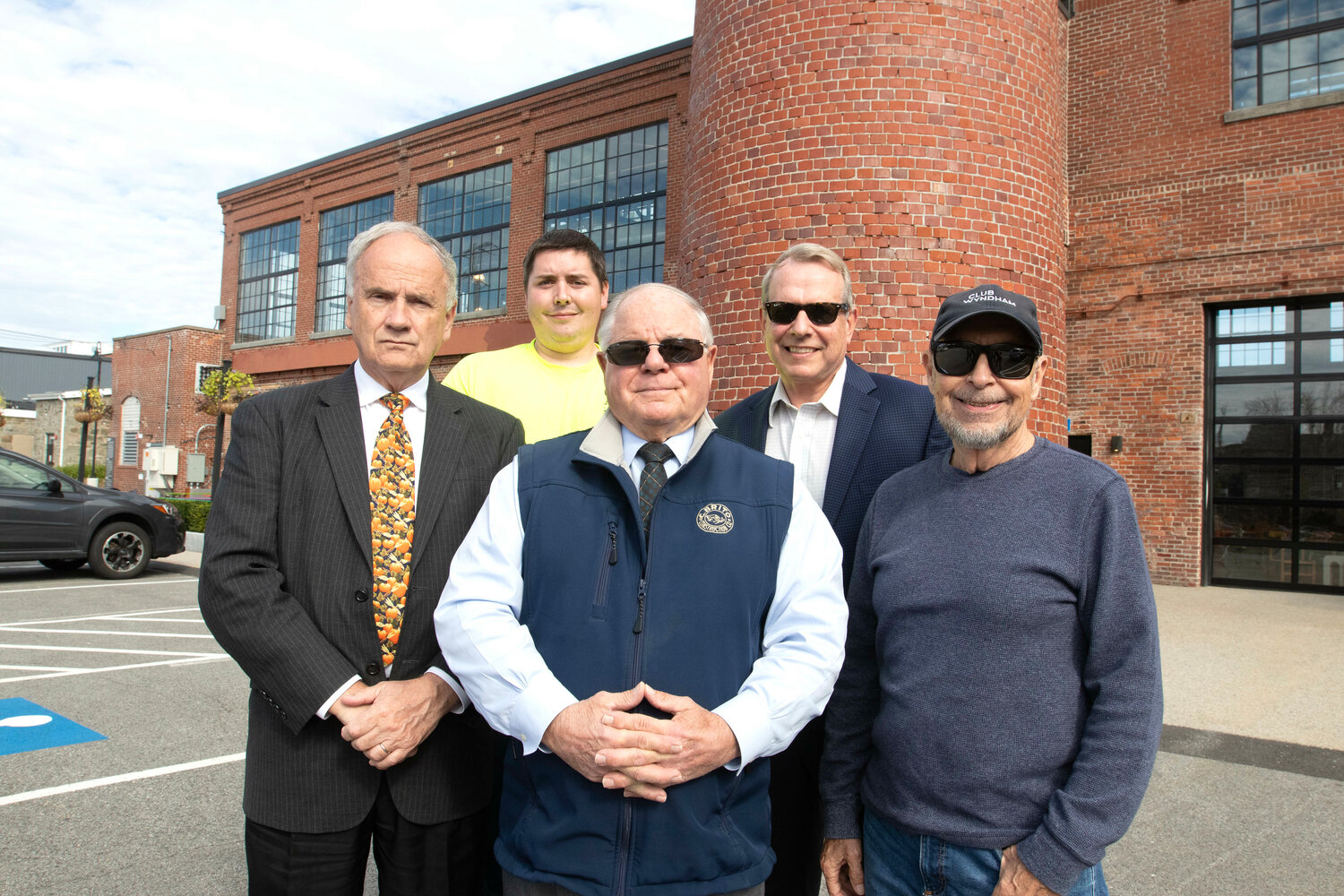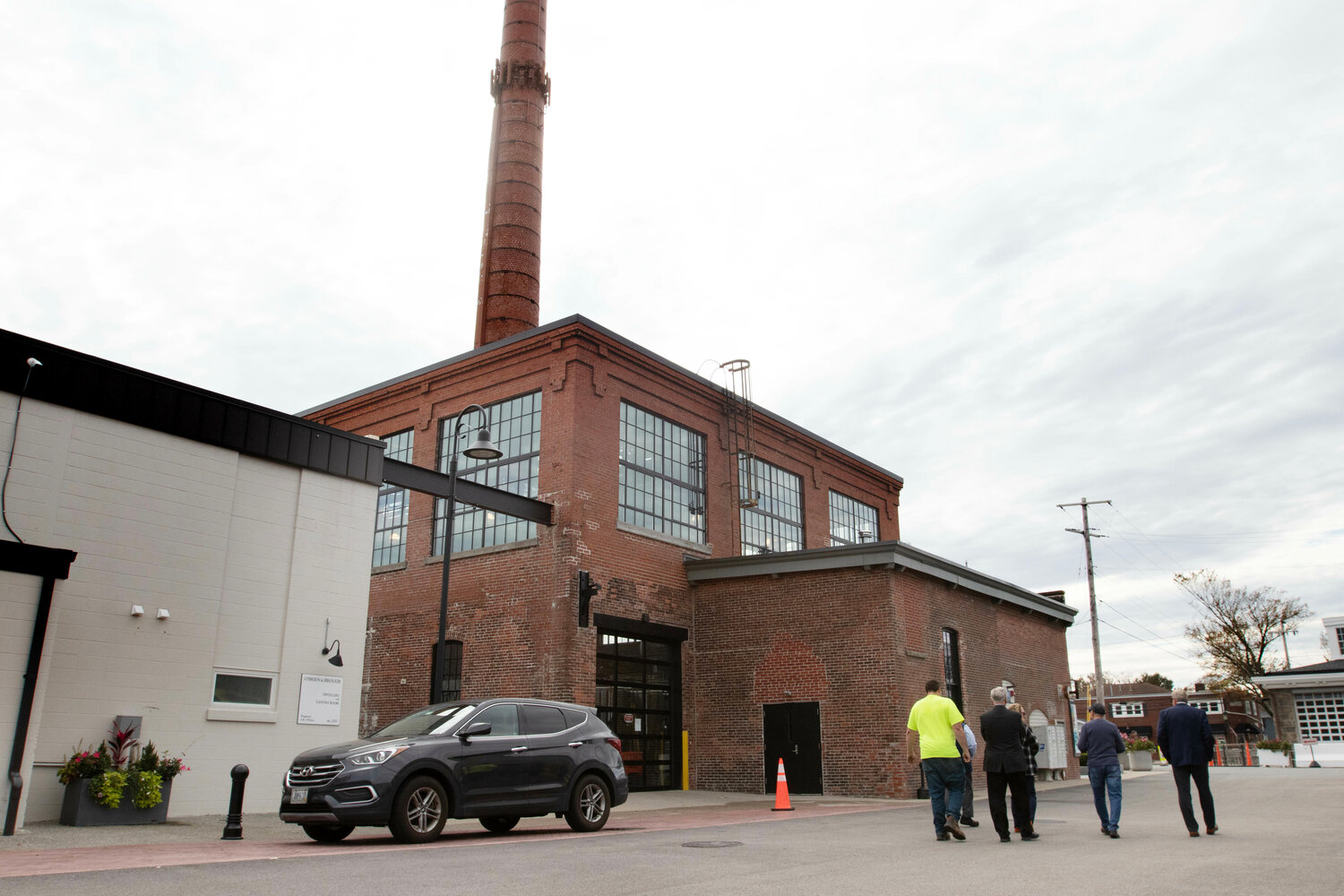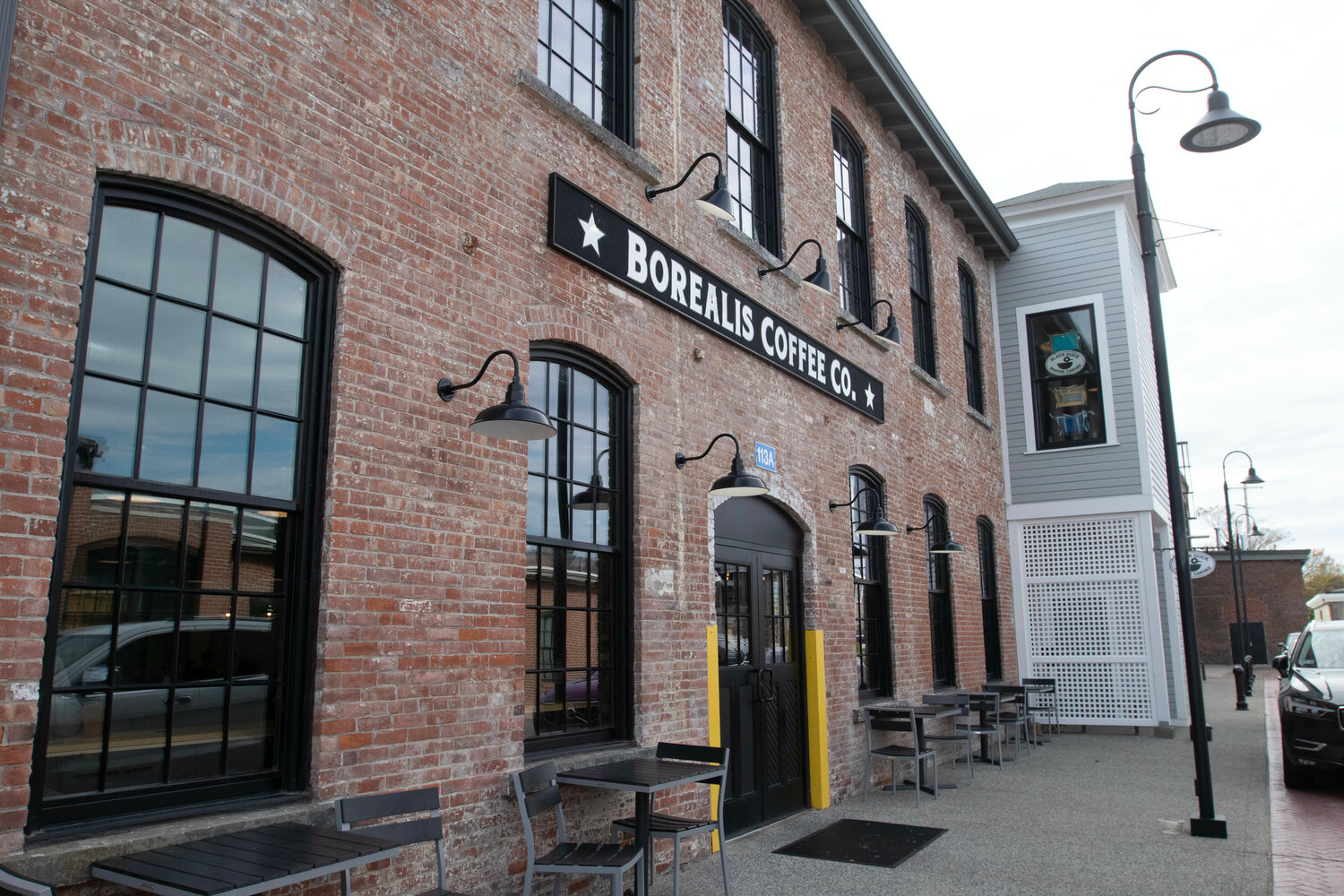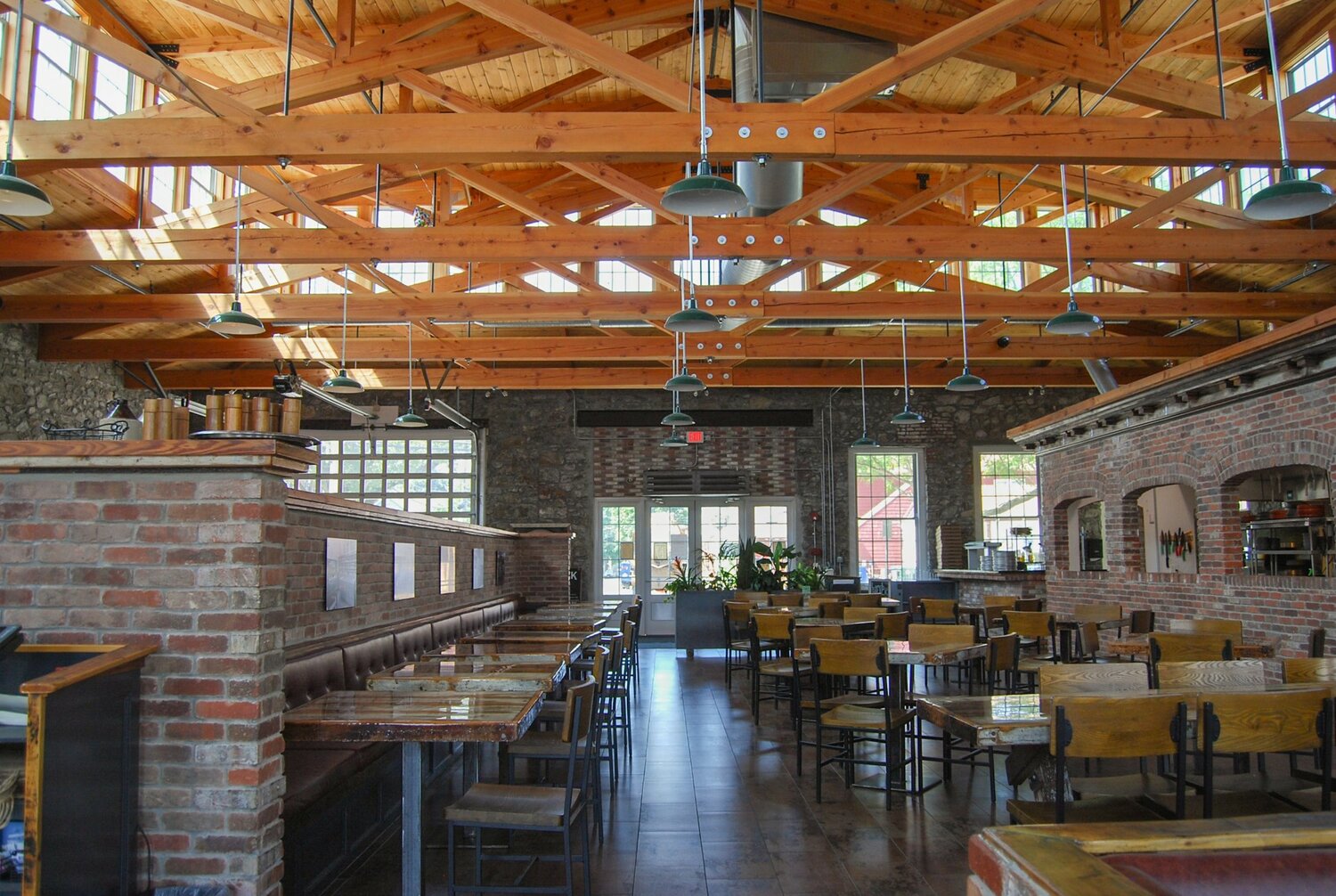How Bristol's Unity Park became an award-winning redevelopment story
From mostly abandoned, dangerous, and blighted, this large former industrial hub of downtown Bristol has become a heralded example of successful historic preservation and commercial redevelopment.
This item is available in full to subscribers.
Please log in to continue |
Register to post eventsIf you'd like to post an event to our calendar, you can create a free account by clicking here. Note that free accounts do not have access to our subscriber-only content. |
Day pass subscribers
Are you a day pass subscriber who needs to log in? Click here to continue.
How Bristol's Unity Park became an award-winning redevelopment story
Once upon a time, the expansive property at 500 Wood St., now Unity Park, was the centerpiece of Bristol’s thriving industrial heart.
A quick history: the National Rubber Company became an important business interest in Bristol around the end of the Civil War, when, in 1864, Augustus Bourn built the plant on Wood Street. It was bankrupt by 1887, and Samuel Colt was appointed receiver. He reorganized the company and reopened it in 1888 as the National India Rubber Company, growing the company further with a series of mergers and acquisitions in the 1890's, when it again changed its name to the United States Rubber Company. The company quickly became the largest rubber conglomerate in the country.
Colonel Colt remained loyal to Bristol throughout his stewardship of the company, and when times got tough and advisors counseled him to close the Bristol plant, Colt refused to sacrifice local jobs.
In 1931, shoe manufacturing ceased at the facility, and during World War II, the factory employed about 6,000 people in the manufacture of rubber-insulated cable and wiring. Bristol had a population of about 12,000 people at the time.
In 1957, Kaiser acquired the plant, operating the facility as a copper and aluminum wire plant. Until it ceased operations in 1977, it continued to be the primary employer in the community. The property was purchased by Providence developer Lyle Fain in the early 1980s and renamed it the Bristol Industrial Park, but would lie fallow until ground was broken in 1993 for the first phase of the renovation of about half of the 800,000-square-foot, 18-acre complex.
The Bristol Foundation, a nonprofit developer, created housing for the elderly, followed by an assisted-care facility, at Franklin Court. The local committee that oversaw the project later changed its name to the Mosaico Community Development Corporation.
In 2010, Mosaico purchased the Bristol Industrial Park, and tried for years to raise the funds to complete its revitalization, but substantial code and brownfield (a term for former manufacturing property that may be blighted with contaminants) concerns stymied their efforts until 2019 when insurmountable fire code issues caused the closure of the park — and Mosiaco.
Despite the best efforts of Mosaico, the revitalization of the Bristol Industrial Park, and the Wood Street corridor along with it, labored against economic and societal trends that pushed back against efforts to return the space to its long-ago manufacturing productivity.
A lifeline, in 2019
“We were notified that this was going into receivership, and there were individuals in town that were very concerned about this becoming one massive fire,” said Joseph Brito Jr., Unity Park CEO. “So Eddie (Edward Cox, Jr., Unity Park’s CFO) put on his thinking cap and started to dig into it, and said, you know, we’ve got to show up for this. Which we did. And that was the beginning of it.”
A couple of days later, Brito brought in Jordan Sawyer, owner of the Bristol Oyster Bar.
“Jordan always wanted to have a second restaurant, so Eddie and I had him meet us over here a couple days later,” said Brito. “It didn't look like this,” said Brito outside the beautifully rehabilitated Brick Pizza Co., Sawyer’s year-old establishment. “The doors were blown in, the floor was full of water, the seagulls were living here and not paying rent. And Jordan looked around and said he’d take it.”
“Years ago the owners of this property were the largest employers in town, but those jobs are long gone,” said Cox. “The anticipation that manufacturing would return was part of the reason that it it languished so long, but that wasn't going to happen. The time was right for the Town to realize that a blend of uses that would complement one another would be the best way to ensure the survivability and the vitality of the complex.”
Brito credits Cox with laying the groundwork, getting the approvals up front, as well as “very friendly” commercial zoning that allowed almost anything except a limited list of what Town officials wanted prohibited.
“We wanted to move like lightning if we got this,” said Brito. “Zoning, Planning, the Historic District Commission, all the players came up with a list of things that they did not want to see here. And we went to task on it and in 14 months brought in 23 businesses and 235 jobs.”
A monumental task
When it came to the physical rehabilitation of the property, truly no stone was left unturned. Every stone, every brick had to be repointed. The building now housing the Brick Pizza Co. was mortared with beach sand, which blew apart under the force of the pressure washers used to remove the old paint. Pivotal Brewing, the other earliest tenant, wanted to move in at the first opportunity as well. Brito’s team brought in a 465,000 BTU heating unit and built scaffolding over the walls, so work could commence.
Then the pandemic hit and did its best to bring productivity to a halt — but at Unity Park, the progress continued.
“It was right after he [Brito] purchased it that COVID hit,” said Architect John Lusk of JHL Techture, whose involvement with the property predates Brito’s. “And still with all the restrictions and the lead times and the delays, it's remarkable that so much was done in the next 14 months.”
Like Lusk, Jereme Beller, Unity Park’s Superintendent, was involved under Mosaico’s leadership. “We inherited Jay with the property,” joked Brito. “He’s done a hell of a job as far as knowing the infrastructure of what was here and how to make it work. He has really been a big asset helping us get it done.”
“Another important aspect of this whole project is the pursuit of state and federal rehabilitation tax credits,” said Preservation Consultant Fred Stachura. “When you look around you see this is a first-class job…getting rehabilitation tax credits offset some of the cost which enabled a top-quality rehabilitation that preserves the important historic fabric of these buildings.”
Sustainable reuse for all of Bristol
“This is also sustainable design,” said Lusk, not just referencing the swath of solar panels on the expansive flat rooftops. “We’re environmentally friendly, and at the same time we're working to preserve a very important piece of Bristol. We didn't just do housing — this property is still is owned in a sense by everyone in Bristol. They can use it and experience it.”
“We wanted to keep the industrial aesthetic,” said Stachura. There is just enough landscaping to soften it up a bit, but hardscape is still the dominant feel.
The other thing that makes it a unique mill rehabilitation is that it’s a real economic engine. “It’s different because of the mix of uses that are here,” said Stachura. “You actually have manufacturing that's still going on at a mill — imagine how innovative that is.”
Brito also notes that, for the most parts, Unity’s tenants are all start ups. What’s more, in a couple of cases, Unity stepped up to assist their tenants with financing and their build outs. “So not only did we bring in tenants, but through Eddie's creativity we were able to help them get a foothold.”
“And we have some blue economy businesses, like Flux Marine, and Sea Legs — they're from New Zealand, and this is their international office.”
“These are high paying, professional and technical jobs,” said Stachura.
“It's generating wealth within the community and sustainability, not in the brick and mortar sense, but from the standpoint of economics,” said Lusk. “It makes Bristol a destination which is good for all the businesses.”
“Working with (Unity Park, LLC) has been a delight,” said Lusk. “An architect is only as good as his clients allow them to be and they've given me a lot of latitude. Part of that was creating the courtyard between Pivotal and O'Brien and Brough. That was connected, all those windows and doors and openings had all been bricked in. A lot of people wouldn't have given up their leaseable square footage to create a space that makes both of those spaces so much more delightful, which allowed us to restore this building back to its original strength and character.”
The road to the Rhody
“Karen Binder (Blithewold’s Executive Director) called me up and said she was nominating us for the Rhody Award at Preserve Rhode Island,” said Brito. “She explained it what it was and she sent the letter and out of a multitude of other entities we were selected to be one of 10 winners.”
“When I first visited the property this past winter, I was really blown away by the transformation of what had been a dilapidated, unsafe, and abandoned mill structure,” said Binder. “To see it transformed into this vibrant and economic engine for the town was really amazing to me. I just knew it was worthy of recognition and celebration, and I am so excited the project and team was recognized.”
The award was actually two-pronged, explained Stachura. One was for adaptive reuse, repurposing the complex for contemporary purposes while maintaining its historic integrity. That aspect of the Roady Award was determined by a professional committee. But Unity Park also received the People's Choice Award, determined by balloting all the members of Preserve Rhode Island — almost 900 people in total. Collectively, they voted for Unity Park as the top project out of all the honorees.
And they aren’t done yet
Brito is not yet ready to make any announcements about plans for Building Group 3 — the east side of the complex and largest part of the project in terms of area. While those plans remain in early stages, there is palpable enthusiasm within the team.
“We think that's probably the key to the project,” said Cox. “We’re moving at a rate that will assimilate the tenants and complement one another and hopefully next year we will have some big announcements.”
“My feeling has always been that Building Group 3 will be the crown jewel of the property,” said Lusk. “Developing that right and bringing in the right tenants will help support all these other businesses and keep them going.”
And the Rhody goes to…
“If you looked up ‘entrepreneur’ in a Rhode Island dictionary, you’ll find the definition: Joe Brito Jr.,” said Valerie Talmage, Executive Director of Preserve Rhode Island, introducing the Unity Park award at the United Theatre in Westerly on Oct. 15. “When I visited Unity Park in the lead up to the Rhody Awards, between taking phone calls where deals were clearly in the making, Joe explained that his family business is in utility construction – but has extended to turning around blighted properties. A life-long Bristol resident, Joe assembled a team to turn around the abandoned industrial site in the heart of town. They not only took on the complicated rehabilitation of deteriorated structures, but — and this is what makes this such a noteworthy project — they built-to-suit, and enticed business after business to locate at Unity Park, even helping to finance new business ventures. The turnaround was quick, classy, and astounding.”
Talmage also recognized the Town, and Administrator Steve Contente. “The Town followed through on their pledge to help this turnaround work, making sure that regulators and decision makers acted as allies and not obstacles,” she said. “A visit to Unity Park in Bristol should be on the bucket list of everyone who cares about activating historic sites.”
Why Unity?
Brito explained the name in the video that accompanied the award presentation.
“As a result of Ed’s discussions with the receiver and getting the approvals for us that we wanted, and the Town wrapping their arms around us and trying to make this venture go forward as quickly as possible, we jointly agreed that we should call it Unity Park, because everyone was working for the benefit of the common good of Bristol.”
“That’s where the name Unity Park came from.”
The Unity Park LLC team and project will be honored by the Town Council and Preserve Rhode Island at the next Council meeting, Wednesday, Nov. 1, 7 p.m. at Town Hall.

















